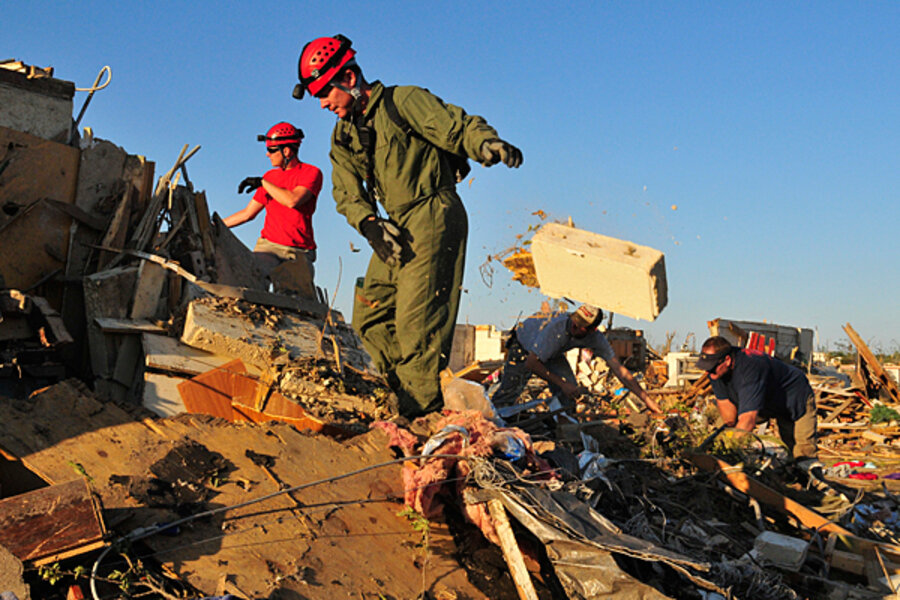Alabama tornadoes: dozens remain missing one week later
Loading...
| Atlanta
Dogs and search crews are still combing rubble mountains and far-flung pastures in search of Alabama tornado victims, dozens of whom still can't be located a week after disaster struck.
At least 328 people across six states perished in the record tornado outbreak that saw at least 178 major confirmed tornadoes slash across wide swaths of the Deep South, striking major population centers and rural hamlets alike.
The rolls of the missing are uncertain and ever changing. The actual number of missing across the South is hard to come by, with the firmest data released by Tuscaloosa, Ala., which alone reports 25 missing.
The task of disaster investigators is complicated not only by the exhaustive job of rubble-searching, but also by people's loss of cell phones; the destructiveness of the tornadoes, which in some cases carried debris miles; and the uncertainty, even in tight-knit communities, over whether someone is missing or simply left in a hurry without telling anyone.
The inability to account for everyone, meanwhile, is preventing many families and communities from moving toward a sense of normalcy, similar to what happened in places affected by hurricane Katrina and the 9/11 terror attacks.
"The main difficulty for communities hit by a sudden-onset event like a tornado is accounting for people in cases where whole communities were leveled," says Carlos Castillo, a former assistant administrator at the Federal Emergency Management Agency (FEMA). "There's a possibility that the result won't be positive for many of the people missing, but there's also a possibility that some of those missing will turn up in different places. And that's what people are hoping for right now, that people haven't been able to communicate rather than lost their lives."
As communications improve, the number of missing has declined dramatically – from more than 300 on Monday to 25 Thursday in Tuscaloosa, the hardest hit major city. Mayor Walt Maddox has expressed a concern that the final death toll will continue to climb, but many of the missing and feared lost are being found in hospitals or, more often than not, turning up unharmed at church to general surprise.
In Hackleburg, Ala., where 18 people lost their lives, only three people remain unaccounted for, and they're believed to have been out of town when the storms hit, says emergency management spokesman David McComb.
In one testament to the difficulty facing emergency managers, casualty tolls swung wildly this week, with Alabama reducing its number of confirmed dead from 250 to 238, citing errors that led to double-counting of some victims. Rolls of the missing also vary widely depending on which agencies are reporting the numbers, underscoring counting difficulties that FEMA Administrator Craig Fugate warned about last week.
Reconciling the casualty numbers in the Alabama tornado disaster will likely be more successful than after hurricane Katrina or after the 9/11 terror attacks, where finding and identifying victims became, in some cases, impossible. Some 130 people are still considered missing from hurricane Katrina, and 24 people remain missing and presumed dead from 9/11.
But the sheer power and breadth of the Alabama tornadoes could rival other mass casualty tornado outbreaks in 1925, 1932, and 1974. In some cases, debris from tornadoes was carried for miles, heightening the concerns of those who still haven't been able to contact loved ones near storm-struck areas.
In many areas, including Tuscaloosa, officials continued to search the rubble, even as law enforcement tried to contact those who have been reported missing to get a bead on their whereabouts. Tuscaloosa Fire Chief Alan Martin told the Associated Press that while tornado-leveled areas have been swept several times, "We have not totally cleared any area."





